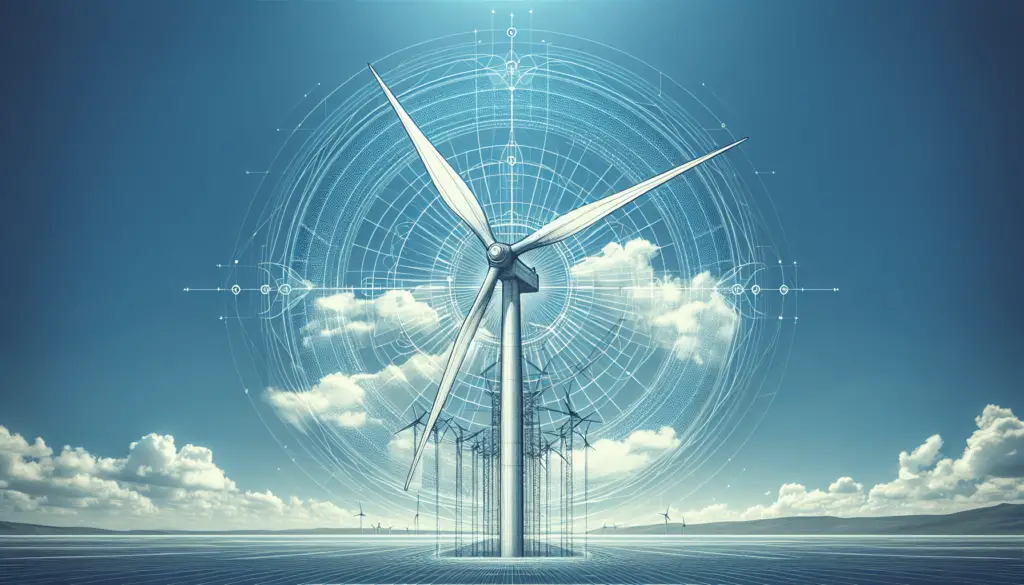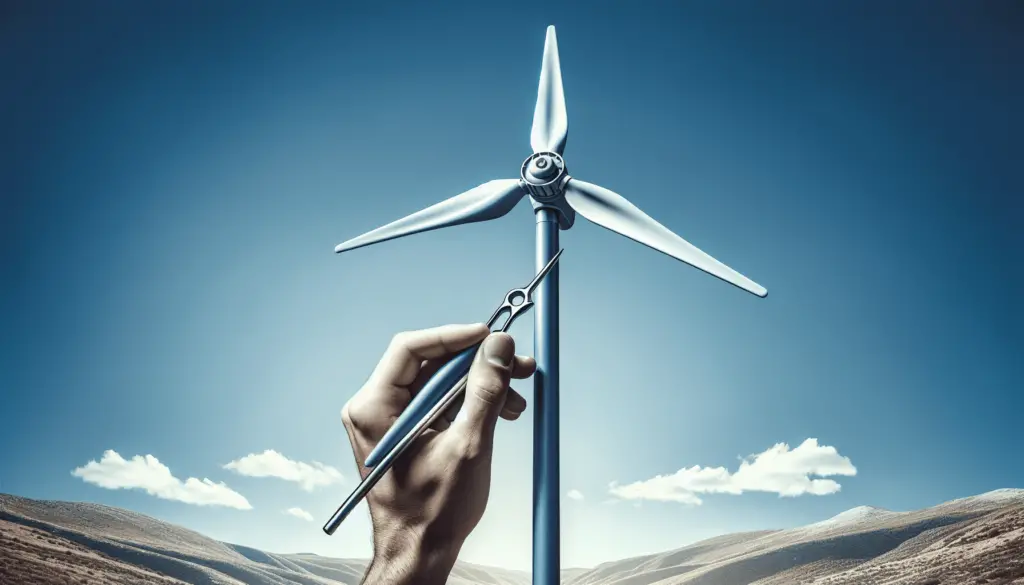Are you interested in renewable energy solutions that you can implement at home? Wind energy is a sustainable and environmentally-friendly option that is accessible to many people. In this article, you will learn about DIY wind turbine projects that you can tackle to harness the power of wind and generate electricity for your household needs. Let’s uncover the exciting world of wind energy projects together!
Why Wind Energy?
Have you ever wondered why wind energy is considered one of the most promising sources of renewable energy? Wind turbines generate electricity by harnessing the power of the wind and converting it into usable energy through a series of mechanisms. By utilizing wind energy, you can reduce your reliance on fossil fuels and contribute to a cleaner and greener planet for future generations.
Cost-Effectiveness and Sustainability
Harnessing wind energy through DIY wind turbine projects can be a cost-effective way to generate electricity for your home. Once you have installed a wind turbine, it can produce electricity for many years with minimal maintenance costs. Additionally, wind energy is a sustainable resource that does not deplete the Earth’s natural resources, making it an environmentally-friendly choice for energy production.
Types of DIY Wind Turbines
When it comes to DIY wind turbine projects, there are several types of turbines that you can choose from based on your energy needs and technical skills. Let’s explore some of the most common types of DIY wind turbines that you can build at home.
Horizontal Axis Wind Turbines (HAWTs)
Horizontal Axis Wind Turbines (HAWTs) are the most popular type of wind turbine for residential use. These turbines feature blades that rotate around a horizontal axis, similar to the propeller of an airplane. HAWTs are efficient in capturing wind energy and converting it into electricity, making them a practical choice for DIY projects.
Vertical Axis Wind Turbines (VAWTs)
Vertical Axis Wind Turbines (VAWTs) are another option for DIY wind turbine projects. These turbines have blades that rotate around a vertical axis, which may be more suitable for locations with changing wind directions. VAWTs are easier to build and maintain compared to HAWTs, making them a beginner-friendly choice for DIY enthusiasts.
Savonius Wind Turbines
Savonius Wind Turbines are a simple and efficient type of wind turbine that you can build at home. These turbines have a unique curved design that allows them to capture wind energy from any direction. Savonius turbines are ideal for low wind speed environments and can be constructed using everyday materials such as PVC pipes and plastic buckets.

DIY Wind Turbine Construction
Now that you are familiar with the different types of DIY wind turbines, let’s discuss the construction process involved in building your own wind turbine. While the specific steps may vary depending on the type of turbine you choose to build, the general construction principles remain the same.
Materials Needed
Before you begin constructing your DIY wind turbine, you will need to gather the necessary materials. Common materials for building a wind turbine include:
- PVC pipes
- Wooden dowels
- PVC fittings
- Plastic buckets
- Blades (made from wood, PVC, or metal)
- Generator (alternator or DC motor)
- Wiring and connectors
- Tower structure (wood or metal)
- Batteries (for energy storage)
Step-by-Step Construction
Building a DIY wind turbine involves several steps, including blade construction, tower assembly, electrical wiring, and installation. Here is a general guide to help you get started on your wind turbine project:
-
Blade Construction: Create blades for your wind turbine using lightweight and durable materials. Design the blades to capture wind energy efficiently and withstand the forces of rotation.
-
Tower Assembly: Construct a sturdy tower to support the wind turbine and elevate it to a height where it can capture maximum wind energy. Ensure the tower is securely anchored to the ground to withstand strong winds.
-
Electrical Wiring: Connect the blades and generator to the electrical system using wiring and connectors. Make sure to follow safety guidelines and consult an expert if needed.
-
Installation: Install the wind turbine in a location with consistent and strong wind flow. Position the turbine facing the prevailing wind direction to maximize energy production.
Safety Precautions
When working on DIY wind turbine projects, it is essential to prioritize safety to prevent accidents and injuries. Here are some safety precautions to keep in mind during the construction and installation process:
- Work in a well-ventilated and well-lit area to ensure visibility and comfort.
- Use appropriate protective gear such as gloves, goggles, and sturdy footwear.
- Secure all components and equipment to prevent them from falling or moving during construction.
- Follow the manufacturer’s instructions and safety guidelines for each component, especially when working with electrical systems.
Maintenance and Troubleshooting Tips
After successfully building and installing your DIY wind turbine, it is crucial to perform regular maintenance to ensure optimal performance and longevity. Additionally, knowing how to troubleshoot common issues can help you address any problems that may arise during operation.
Maintenance Checklist
To keep your DIY wind turbine in top condition, consider creating a maintenance checklist that covers the following tasks:
- Inspect the blades and tower structure for damage or wear.
- Clean the blades and remove any debris or obstructions that may affect performance.
- Check the electrical connections and wiring for loose connections or signs of damage.
- Monitor the battery and energy storage system to ensure proper functioning.
- Keep a record of maintenance activities and schedule regular inspections to prevent issues before they escalate.
Troubleshooting Common Issues
If you encounter problems with your DIY wind turbine, here are some common issues and troubleshooting tips to help you diagnose and resolve the issue:
- Blade Damage: If the blades are damaged or broken, replace them with new blades that are properly balanced and aligned.
- Low Power Output: Check the wind turbine’s positioning and ensure it is facing the wind direction for maximum energy production.
- Electrical Malfunction: Inspect the wiring and connections for loose or damaged components, and repair or replace as needed.
- Battery Failure: Test the batteries and charging system to identify the source of the issue, such as inadequate charging or drainage.

Benefits of DIY Wind Turbine Projects
Embarking on a DIY wind turbine project offers numerous benefits beyond generating clean energy for your home. Let’s explore some of the advantages that DIY wind turbine projects can bring to your life and the environment.
Energy Independence
By generating your electricity with a DIY wind turbine, you can reduce your dependence on traditional energy sources such as fossil fuels and the grid. This increased energy independence provides you with greater control over your energy consumption and costs.
Environmental Impact
Utilizing wind energy through DIY wind turbine projects helps reduce your carbon footprint and the emission of greenhouse gases into the atmosphere. By choosing renewable energy sources, you can contribute to a cleaner and healthier environment for future generations.
Learning and Skill Development
Building a DIY wind turbine requires hands-on construction, electrical wiring, and problem-solving skills. Engaging in a wind turbine project can help you learn new skills, expand your knowledge of renewable energy technologies, and gain a sense of accomplishment from building a functional system.
Cost Savings
While the initial investment in a DIY wind turbine project may require some upfront costs, the long-term savings on electricity bills can outweigh the initial expenses. By generating your electricity from wind energy, you can reduce your monthly utility bills and potentially earn credits or incentives for producing clean energy.
Community Engagement
DIY wind turbine projects can also foster community engagement and collaboration. By sharing your knowledge and experiences with others, you can inspire more people to embrace renewable energy solutions and work together towards a sustainable future.
Conclusion
As you can see, harnessing the power of wind through DIY wind turbine projects offers a rewarding and sustainable way to generate electricity for your home. By building and installing a wind turbine, you can tap into the abundant energy of the wind and contribute to a cleaner and greener planet. Whether you are a novice DIY enthusiast or an experienced renewable energy hobbyist, there is a DIY wind turbine project suitable for your skills and energy needs.
Are you ready to embark on your wind energy journey? Start your DIY wind turbine project today and enjoy the benefits of clean, renewable energy for years to come. Happy building!
